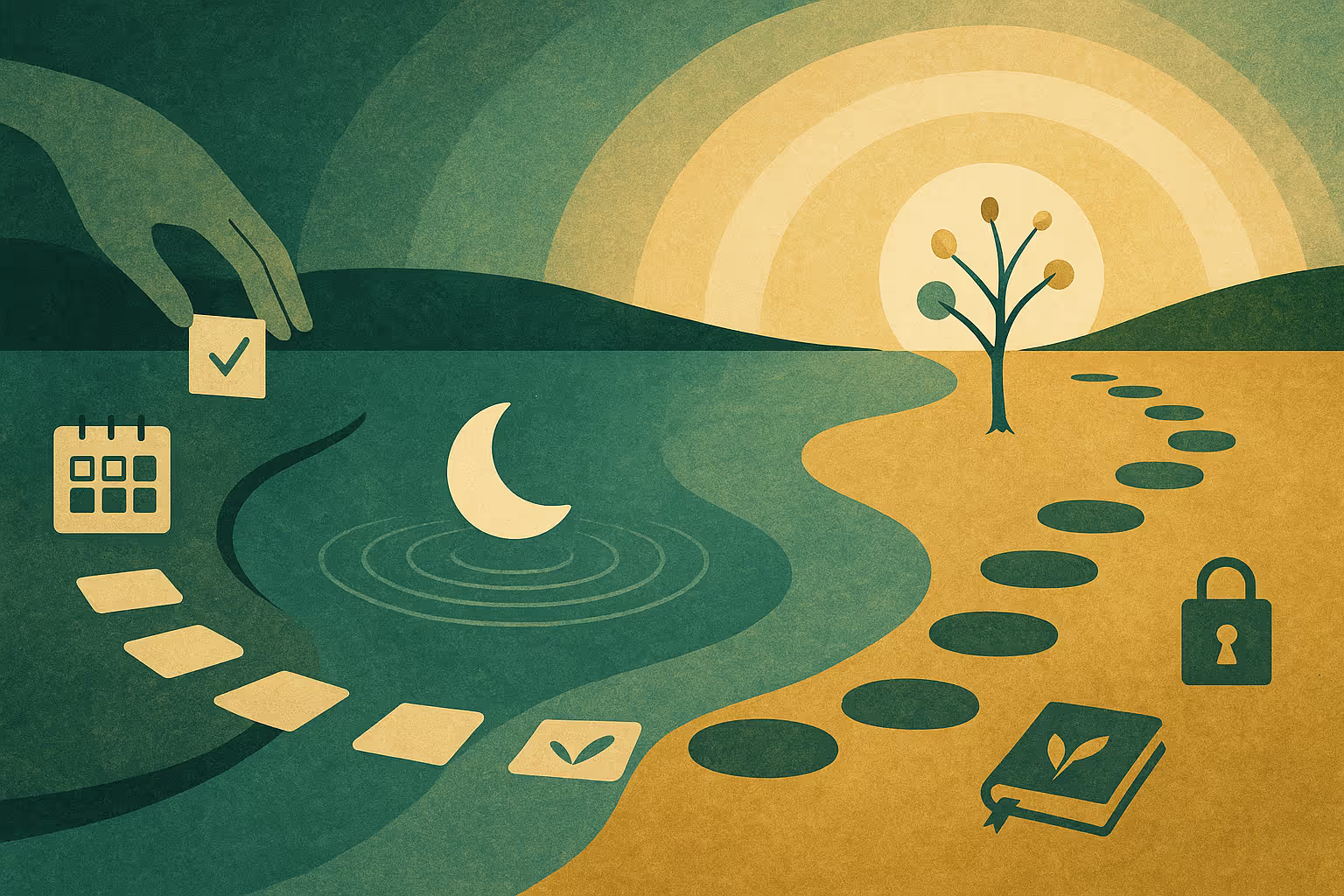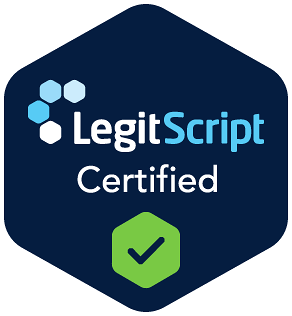The Definition of "Recovery" in Ketamine Therapy & Mental Health Treatments
To start our discussion of how to use ketamine and esketamine to promote recovery let’s first start with a working definition of what “recovery” is. Recovery is less a state of being and more a process by which one finds oneself less fettered by symptoms, more engaged with a sense of authentic self, and enabled to adventure into the different sorts of tasks required in order for one to feel fulfillment. The concept of recovery does not inherently imply the restitution of how one was onto the current condition. Instead, recovery implies growth, change, and the development of more nuanced perspectives and ways of being that are better able to manage with lifes quotidian adversities. The experience of recovery also touches on multiple threads of experience: biological, psychological, spiritual, social, existential, educational, occupational, etc., to name a few. It is with this as a general platform that we will take a deeper dive into looking at how ketamine and esketamine can play a role in a person’s recovery.
How Ketamine Therapy and Spravato (Esketamine) Work
Both ketamine and esketamine are biological medications. They impact glutamate and its receptor system, resulting in the release of brain derived neurotrophic factor which can promote the growth of connections between brain cells called “synapses.” They have impact on the opioid receptor system with direct implications on how one develops a healthy mood and sense of well-being. There is growing research to explore how they impact a network of interconnected nodes in the brain called the “default mode network.” This particular network is responsible for so much of the background processing that goes on to help us interpret the manifest experience in front of us. Unlike other psychiatric medications (or all other medications, for that matter) there can be, for some, a subjective element to how these medications work, as well the experience of being under the throes of ketamine and esketamine can contribute to some of its effectiveness. Psychedelic-like experiences, euphoria, and the ability to interpret old information with fresh perspectives are all potentially a part of the ketamine and esketamine experience. In this way, the psychedelic-like effect that comes with the medications can result in growth moments during which time a person experiences himself/herself/themselves in different lights, thereby adding nuance in how they perceive themselves and the world around them. This psychological/psychedelic dimension of ketamine and esketamine does not happen for everyone or during every treatment experience, so when it does it can be quite profound. People can take from these experiences lessons that impact how they think about themselves. Furthermore, the experience of Novelty and Wonder, often likened to something spiritual, can come with the ketamine and esketamine experience. This Wonder can affect something of an antidote-like moment for the nihilism, negativity, and ennui that comes with so many different psychiatric conditions. Experiencing the world as scintillating, curious, bizarre, playful, and (arguably most importantly) surprising can teach us ways of seeing the world around with that same expectation.
The Effects of Ketamine and Spravato
Taking this all in, ketamine and esketamine can offer biological reprieve as well as a psychological/psychedelic experience that contributes to the generation of recovery. We will talk more about this below, but we should also think about how the medical establishment conceives of recovery. The effectiveness of psychiatric treatments, whether they be medication or psychotherapy, is often measured by different rating skills. There are a host of different rating skills that are commonly employed when assessing depression, OCD, anxiety, and PTSD, for example. The one unifying feature that ties these “tools” together are how they assess for the presence and severity of what physicians call “neurovegetative symptoms.” Neurovegetative symptoms are the symptoms associated with different psychiatric conditions. For example, in major depressive disorder, rating scales typically assess for disturbances in sleep, the ability to experience joy, negative thoughts, changes in energy level, changes of concentration, changes to appetite, how the body experiences depression, and suicidality. In the medical community, when we speak about the effectiveness of medication (i.e., the extent to which they promote recovery) we are frequently referring to how an intervention impacts those aforementioned symptoms. While reliable and reproducible, the ways in which researchers assess the efficacy of medications like ketamine and esketamine can be quite clinical and removed from what patients, themselves, might also find important and key to a subjective sense of improvement.
What Ketamine Therapy and Spravato (Esketamine) Can Provide To People Struggling With Mental Health Conditions
Taken in sum, ketamine and esketamine can help foster a sense of wonder, new psychological insights, and decreases in the severity of neurovegetative symptoms. These treatments can offer an excellent jumpstart to the process of recovery but are, in and of themselves, incomplete. When a person feels depressed, for example, or imposed upon by obsessive thoughts, or awash in the vulnerability engendered by trauma there can be great changes not only to how we feel and how we think about ourselves, but how we act. Our social worlds narrow as we isolate. Our job or school attendance suffers as there may be some days that we simply can’t get out of bed. Our relationships strain under the burden of our symptoms. Recovering into a life worth living requires so much more than a medical treatment, alone. In this way, ketamine and esketamine should be considered catalysts: just as a chemical catalyst can facilitate reactions so that there can be changes in the state of matter more quickly, so, too, can ketamine and esketamine catalyze personal change. When effective, ketamine and esketamine can loosen the grip that mental illness holds on us. It can help diminish the severest of our symptoms. It can foster a sense of wonder and curiosity in us that helps us reengage the world. They can change the physical heaviness and torpor that psychiatric conditions can cause. But at the end of the day, these medications will not call the friends with whom we’ve lost touch, book a trip to re-introduce novelty and exploration in our lives, take us back to a worship service, or open a book so we can resume studying. Ketamine and ketamine should be thought of as important, even critical steps in helping to ameliorate suffering and change perspective sufficiently, but to the end of taking us enthusiastically to the hardest work: intentional growth and development into the person we want to be.
To live a life worth living it is not sufficient to simply experience the absence of pain. Community, success (defined in whatever terms you choose), physical health, spiritual connection, the realization of our ambitions, joy and wonder, among so many things are all necessary to experience manifest quality of life. More than the amelioration of suffering, ketamine and esketamine promote recovery insofar as they can decouple us from that which impedes our forward progress. And with that, ketamine and esketamine can help us move.
Benjamin Yudkoff, MD, MA
Heading 1
Heading 2
Heading 3
Heading 4
Heading 5
Heading 6
Lorem ipsum dolor sit amet, consectetur adipiscing elit, sed do eiusmod tempor incididunt ut labore et dolore magna aliqua. Ut enim ad minim veniam, quis nostrud exercitation ullamco laboris nisi ut aliquip ex ea commodo consequat. Duis aute irure dolor in reprehenderit in voluptate velit esse cillum dolore eu fugiat nulla pariatur.
Block quote
Ordered list
- Item 1
- Item 2
- Item 3
Unordered list
- Item A
- Item B
- Item C
Bold text
Emphasis
Superscript
Subscript







